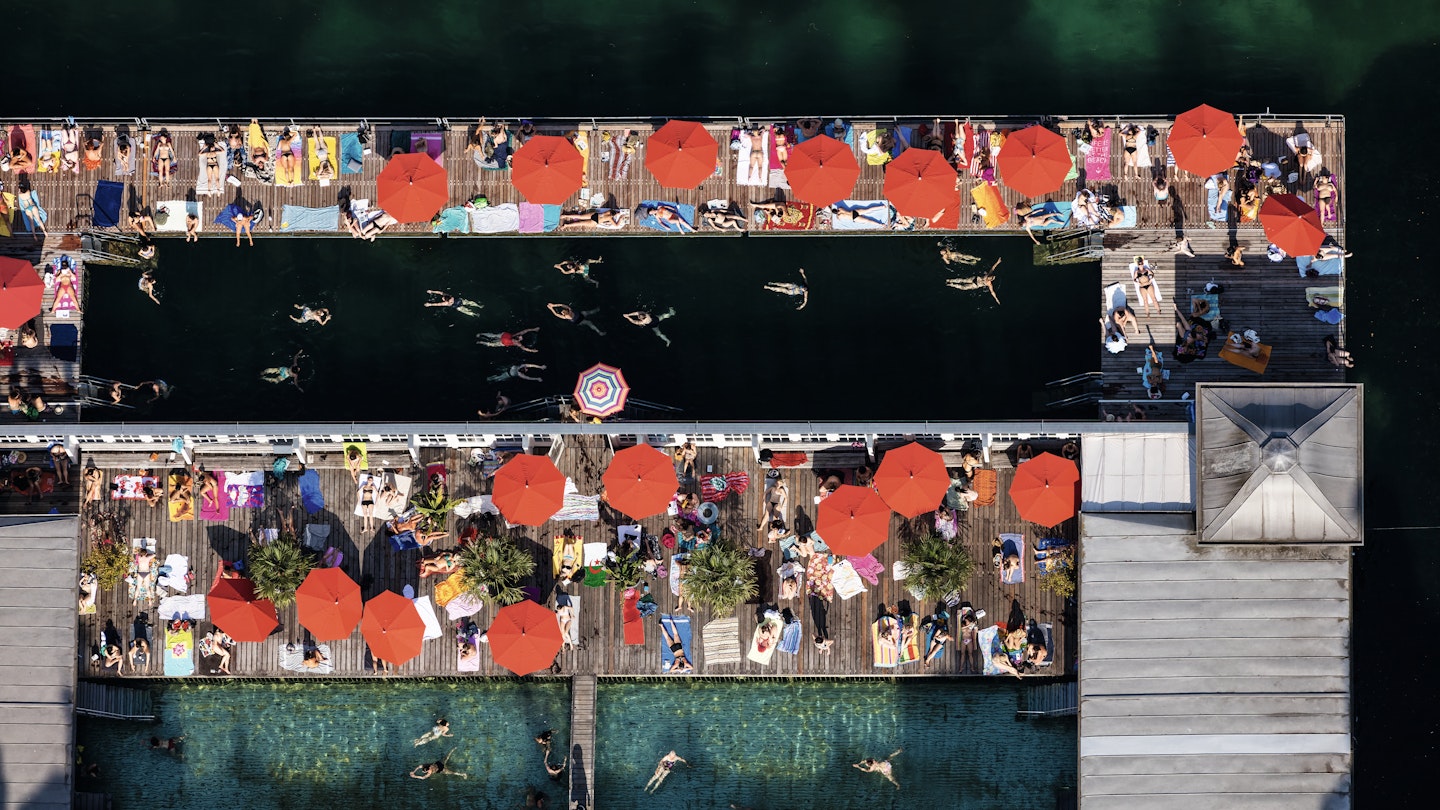Discovering the Lidos: Outdoor Swimming Pools Around the World
Cold-water swimming has gained significant attention in recent years due to its health benefits such as boosting the immune system and alleviating depression. However, can public pools also provide travelers with a unique insight into the culture of a city? Many believe that they can, as outdoor swimming pools often reveal much more about a location than meets the eye.
The Early Morning Swimmers
As dawn breaks in a leafy, quiet corner of East London, steam rises from the glassy surface of London Fields Lido. Here, the morning’s first swimmers, clad in their swim caps and goggles, ease into the tranquil waters, breaking the morning calm to begin their rejuvenating length swims.
These passionate swimmers epitomize the concept of wellness; waking before dawn, they embrace the calmness of pre-coffee London. They’re not just casual participants; they have been transformed by the practice of outdoor swimming, finding renewal in the serenity of the early hours.
Christopher Beanland’s Journey
Writer Christopher Beanland embodies the passion for discovering unique swimming spots worldwide. Although he regularly swims during his lunch breaks at London Fields Lido, he has a keen interest in exploring outdoor pools while traveling. His journey inspired his book, Lido, a thoughtful examination of the architecture, art, and philosophy that surround outdoor swimming pools.
From the Great Bath at Mohenjo-daro in Pakistan, which dates back 5,000 years, to London’s community-focused swimming initiatives, Beanland’s book offers a rich tapestry of stories and historical context for these aquatic spaces.
The Architectural Significance of Lidos
According to Christopher, “Lidos are architecture you can use: you’re actually getting in there and you’re a part of it.” Local pools contribute to a richer, more visceral travel experience, allowing visitors to engage directly with the place they are exploring. For example, the pool at the Zollverein Coal Mine in Essen, Germany, serves as a striking example of industrial regeneration while providing swimmers a historical connection to the site of past industry.
Modern Trends in Swimming Culture
In today’s social media-driven world, many travelers seek to capture an experience that resonates with authenticity. As Beanland states, this trend encourages people to not only visit iconic sites but to actively participate in the local culture by swimming in those spaces. For instance, the Piscina Municipal de Montjuïc from the 1992 Olympics now allows brave swimmers to dive into its depths during summer months.

Lidos provide travelers with an authentic perspective on their surroundings. Locations such as Oasis Sports Centre may not be found in traditional travel guides, yet they offer a glimpse into local life, featuring an open-air pool amidst bustling London.
The Revival of Lidos
A renaissance of swimming pools is indeed taking place, with many pools being revitalized. For instance, Saltdean Lido in Brighton and the iconic Piscine Molitor in Paris have drawn renewed attention, celebrating their rich histories and architectural beauty.
In summary, outdoor swimming pools serve not only as places for refreshing dips but also as cultural landmarks that enhance our understanding of the cities we visit. The stories they tell, their architectural beauty, and their role in community life reinforce the significance of outdoor lidos in the travel experience.




